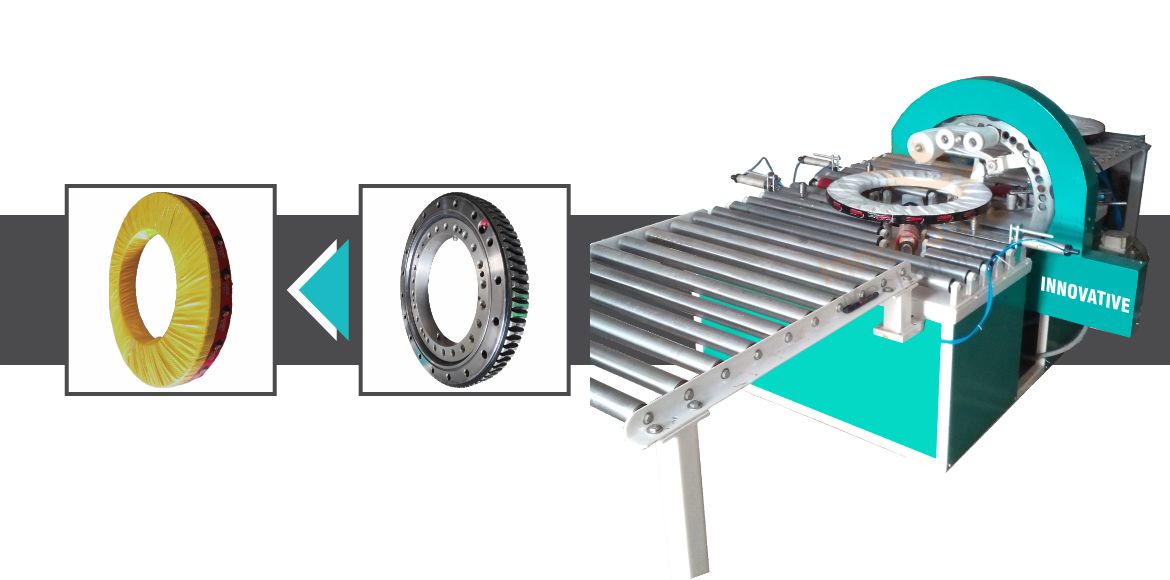Wrapping Up Waste: How Machines Can Revolutionize Packaging for a Circular Economy

The global packaging landscape is at a crossroads. Mountains of waste are straining our planet’s resources, demanding a radical shift from the traditional “take-make-dispose” model to a circular economy where materials are continuously reused and recycled. Consumers and businesses alike are clamouring for sustainable solutions that minimize environmental impact without sacrificing product protection and convenience. While the focus often lies on material selection and recycling programs, a crucial, yet often overlooked, element is the technological advancement occurring in the packaging machinery sector. Surprisingly, the answer to this question is yes, especially when incorporating Wrapping Machines into modern packaging practices.
A truly circular economy demands a holistic approach, focusing on minimizing waste generation and maximizing resource utilization throughout the entire product lifecycle. This entails designing packaging for durability, reusability, recyclability, or composability, and establishing robust systems for collecting, processing, and repurposing materials. Businesses that are looking to move into a new age of sustainable packaging can often do so through the modernization of the materials that they use to package their products. It also requires that those same businesses ensure that their materials are packaged and protected safely.
One of the core challenges in achieving zero-waste packaging is optimizing material usage and eliminating unnecessary waste. This is where the benefits of Fully Automatic Wrapping Machines become apparent. These sophisticated systems are equipped with sensors, programmable controls, and precision film tension mechanisms that enable them to accurately measure the product’s dimensions and adjust wrapping parameters accordingly. This ensures that only the minimum amount of film required to secure the product is used, reducing material consumption and minimizing waste without compromising protection. All of this allows for a better overall process for packaging that reduces waste and is designed to be environmentally friendly.
Furthermore, the advancement and utilization of more environmentally friendly and cost-effective solutions has revolutionized the packaging industry. A significant portion of wrapping consists of securing pallets of materials with high-durability wrapping. This is where Pallet Stretch Wrapping Machine capabilities have the biggest impact on the environment. These newer machines are designed to be more energy efficient and optimized for handling a wide range of sustainable materials, including recycled plastics, biodegradable films derived from plant-based sources, and even innovative paper-based alternatives. They can be programmed to accommodate the specific properties of each material, ensuring optimal wrapping performance and minimizing the risk of tearing or damage. By changing the machinery that is being used, companies can reduce their impact on the environment while still maximizing the profits of their business operations.
To truly determine the environmental impact of packaging solutions, businesses are increasingly turning to Lifecycle Assessments (LCAs). LCAs provide a comprehensive evaluation of the environmental impacts associated with a product or packaging system throughout its entire lifecycle, from raw material extraction and manufacturing to transportation, use, and end-of-life management. By conducting LCAs, companies can identify the most environmentally damaging stages of the packaging lifecycle and implement targeted strategies to reduce their impact. It also ensures that these strategies are working to lower their overall impact on the environment.
Integrating LCAs with automated wrapping solutions can provide valuable insights into the sustainability performance of different packaging options. For example, an LCA might reveal that a biodegradable film, while compostable, has a higher carbon footprint during manufacturing than a recycled plastic film. Armed with this information, businesses can make informed decisions about the materials they use and the wrapping techniques they employ to minimize their overall environmental impact. The information also gives businesses a chance to improve their overall operations and become more sustainable.
The success of the transition to a circular packaging economy hinges on collaboration and innovation across the entire value chain. Packaging manufacturers must invest in research and development to create more sustainable materials and improve the efficiency of wrapping machines. Retailers should work with suppliers to optimize packaging design and minimize waste. Waste management companies need to invest in infrastructure for sorting and processing recyclable and compostable materials. And consumers must be educated about proper disposal methods and encouraged to make responsible purchasing decisions. Only through these efforts can we ensure that resources will continue to be available for generations to come.
In conclusion, achieving a zero-waste future for packaging requires a multi-faceted approach that encompasses material innovation, design optimization, and efficient waste management. Modern packaging technology, especially wrapping machines, plays a vital role in this transformation by enabling businesses to minimize material usage, handle sustainable materials, and improve packaging efficiency. Innovative WrapTech Pvt. Ltd. is committed to being a leader in this revolution by developing cutting-edge wrapping solutions that are both economically viable and environmentally responsible. By embracing innovation and working together, we can unlock the potential of packaging automation to seal the deal on a truly circular economy.